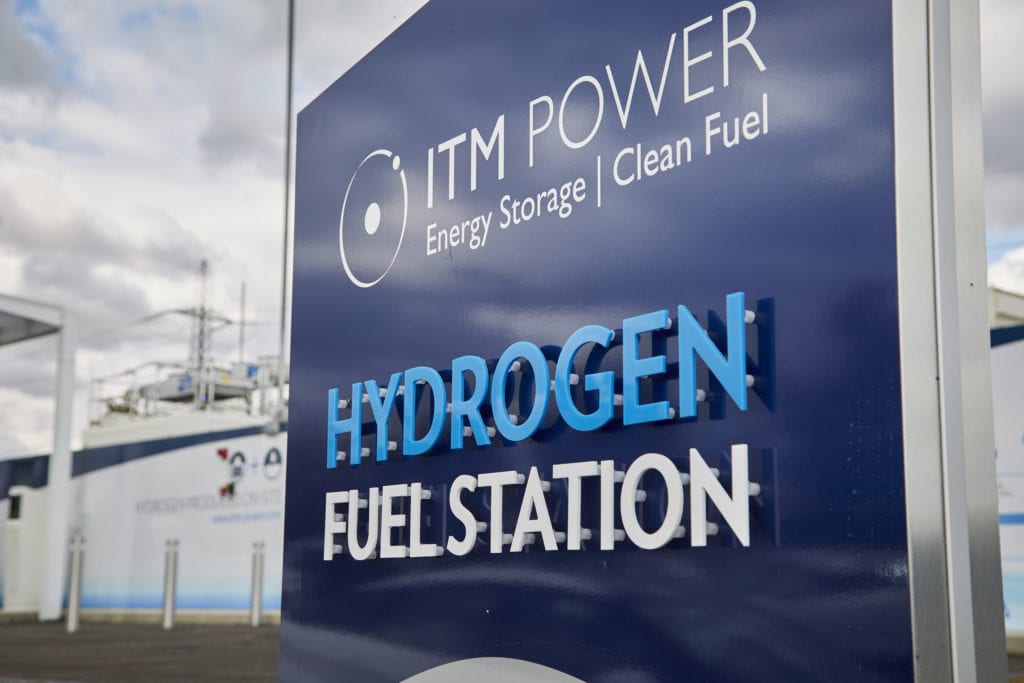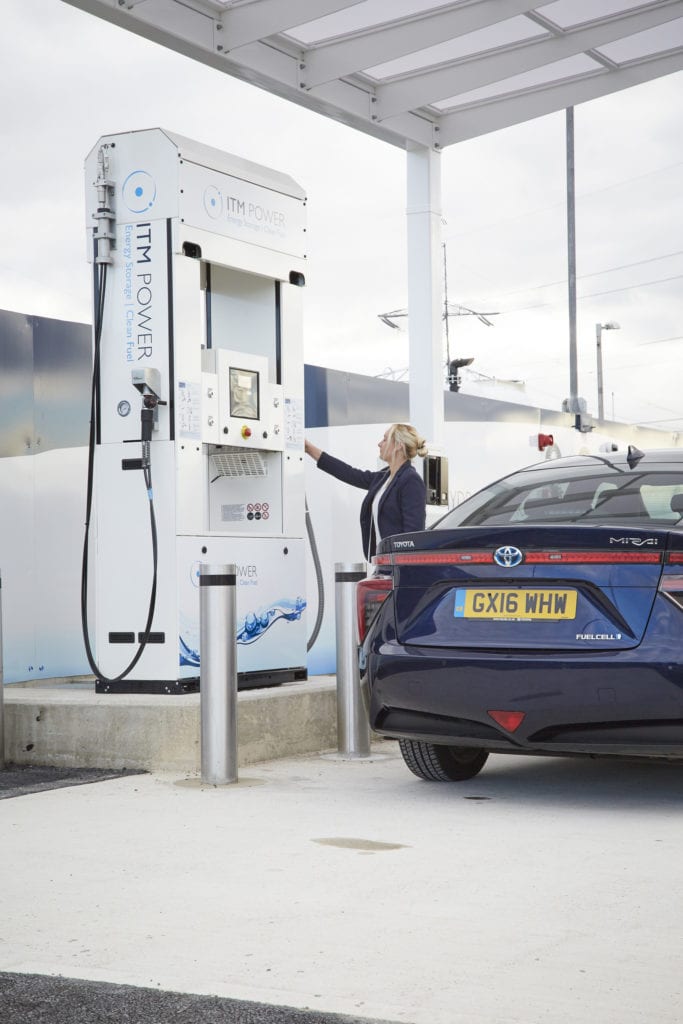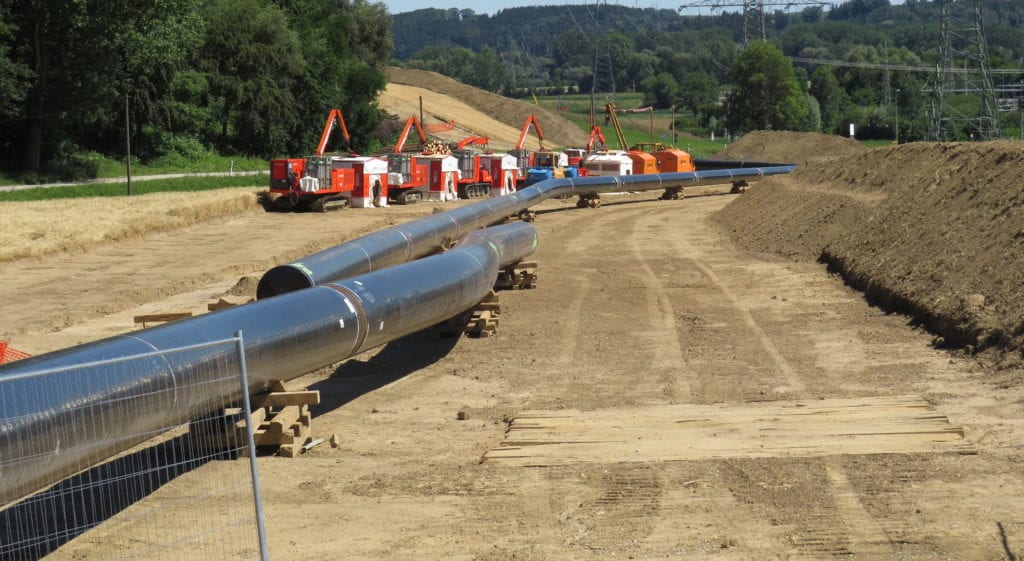Hydrogen: The Rockstar of the Energy Transition
Combined with renewable-sourced electricity, hydrogen has the potential to entirely replace hydrocarbons in Europe by 2050. The new ‘Hydrogen Strategy for a Climate-neutral Europe’ is more ambitious than global targets which puts Europe at the forefront of the energy transition and hydrogen front stage now.
The year 2020 has seen the emergence of hydrogen strategies in many European countries, including Norway, the Netherlands, Austria and Germany, as well as for the European Union as a whole; most importantly, on 8 July 2020, the European Commission, led on this topic by Executive Vice President Frans Timmermans, released the Hydrogen Strategy for a Climate-neutral Europe as part of the European Green Deal. The European Hydrogen Strategy refers among other things to the “2x40GW Green Hydrogen Initiative”, issued by Hydrogen Europe, which outlines the role of water electrolysis until 2030, based on the “ambitious scenario 2030” of the “Hydrogen Roadmap Europe” (FCH-JU).
Worth noting: the targeted 80GW of electrolyzer capacity in Europe and neighboring countries is not enough to produce the parallel aim of an additional 10 million tons of hydrogen that Europe is also aiming for by 2030. This is among the most ambitious hydrogen strategies in the world, even more ambitious for example than the Hydrogen Council’s strategy, which leads to 18% of all global final energy demand covered by hydrogen by 2050, making it a $2.5 trillion industry, which is bigger than oil and gas combined. To get there, the Hydrogen Council foresees an installed electrolyzer capacity of 70 GW globally by 2030. The European ambition for Europe alone is bigger than the Hydrogen Council’s target for the world, which is a true game-changer for hydrogen.
In addition to this public sector development, the private sector is also moving. The pipeline of hydrogen projects has grown substantially according to a report by Wood McKenzie, which notes that the list of potential global investments in electrolyzers planned to be operational by 2030 grew from 3.2GW to 8.2 GW, 57% of those in Europe, over the 6 months to March 2020. And the European electrolyzer manufacturers of all final energy can eventually be covered by hydrogen, which will require an additional volume of green electricity as directly used. A substantial part of hydrocarbons is currently being used as a feedstock in the steel, chemical, and refining industries – this is something that hydrogen can replace, but electricity cannot. The epic proportions of such undertaking are mind-blowing, and 30 years is not a long time.

The new-found enthusiasm enticed Frans Timmermans to label hydrogen the “Rockstar of the energy transition”. At the same time, Elon Musk calls fuel cells “fool cells”, much to the amusement of his fan base, also known as Teslaratis. Although Timmerman’s positive energy, support, and some level of hula-hoop are necessary ingredients for such a profound transition, there is a lot of work ahead. The following points layout the elements of this transition and present some of the perceived controversies.
The never-ending mobility debate
My Twitter feed focuses on the energy transition and is biased towards all things hydrogen. There are many enthusiasts for electric mobility, which is great and understandable, given that local air pollution kills up to 7 million people annually according to WHO estimations and internal combustion engines have a big role in that… Electric cars, scooters, bikes, buses, and trucks are the next evolutionary step in mobility. The electricity for the electric motors can come from onboard batteries, overhead lines, rail tracks or a hydrogen fuel cell. All are great options but here comes the controversy, especially regarding fuel-cell electric vehicles (FCEV’s) versus battery electric vehicles (BEV’s):
Both green hydrogen and green electricity will be available soon, at scales not seen before, for example driven by the fact that Europe is currently converting the natural gas grid to accommodate green hydrogen. And that availability will be for mobility applications to grab. We will have options in the future, like we have now with electricity, gasoline, diesel, LPG and CNG. The difference is that these new options will all be clean.
Elon Musk explains that if we have a solar panel, we can directly charge a battery in a car and drive away, whereas there are a few more steps in the hydrogen value chain with associated losses and costs: production of hydrogen, compression, storage, conversion in the fuel (“fool”) cell… While this is not untrue, it also does not tell the whole story. If equal charging and refueling infrastructure would be available, and if the cars would cost the same (there is no reason why that would not be the case if produced at scale), many people would favor the lower weight, longer range and dramatically shorter refueling times of an FCEV over a BEV.

And while the initial cost of building a network of hydrogen refueling stations is higher than achieving the same with electric charging points, the German Fraunhofer Gesellschaft analyzed that there is a tipping point expressed in market penetration, beyond which hydrogen is a cheaper option overall. But why have the debate at all? Of course, one can argue that for any of these options to be successful, a minimum infrastructure level is required, and there may be some competition for that capital in the build-out phase. A slow build-out of one of the two will keep such options more expensive and unaffordable longer. Other than that, there is little merit in this binary debate. Both green hydrogen and green electricity will be available soon, at scales not seen before, for example driven by the fact that Europe is currently converting the natural gas grid to accommodate green hydrogen. And that availability will be for mobility applications to grab. We will have options in the future, like we have now with electricity, gasoline, diesel, LPG and CNG. The difference is that these new options will all be clean.
Conversion efficiency
Another debate that is often seen and heard is the complexity of the hydrogen value chain, with many conversion steps. Of course, physics being physics, with each conversion step we lose some energy. If we then focus on specific cases, for example the electric mobility case described above, we may jump to the conclusion that certain hydrogen routes are not optimal. However, we should never lose sight of the fact that in the future, the energy input into the system will become ever cheaper. With large-scale solar and wind in good locations already below 2 ct/kWh, and steadily moving towards 1 ct/kWh, this changes the paradigm.
The current energy system is built largely on fossil fuels, which always have a cost that cannot be ignored. With a high cost to start with, the prerequisite is to optimize conversion steps along the chain from primary energy to final energy use, not to waste energy and hence money. However, when the cost of the energy input into the system becomes very small, optimizing the overall system cost is more important than minimizing the losses of all the conversion steps. For example, when comparing direct electricity use vs. the use of hydrogen in a certain application, one should not just look at the production cost and conversion efficiency, but also at system aspects such as storage and transmission, which are much cheaper for hydrogen than for electricity. We have to consider the system in a much more holistic way, and there is a certain complexity in that.
Storage
Storing electricity is not straightforward because it is practically always done through conversion, for example by pumping water up a mountain or chemical reactions in a battery.
Let us analyze the seasonal patterns of supply and demand in Europe in a system predominantly built on a combination of solar and wind. Obviously, the supply of solar energy is much higher in the summer than in the winter, and the bulk of it will come from southern Europe because it is cheaper. While the energy demand for transport or most electricity applications is constant throughout the year, the demand for heating or cooling varies dramatically over the seasons. To cover the winter demand for heating in northern Europe with hydrogen, which is now covered by natural gas, we would need to do two things: transport it from southern Europe to the north, and store surplus summer energy for use in the winter. We are talking about thousands of TWh, which cannot be done with batteries. Like natural gas, hydrogen can be transported in pipelines very effectively and stored underground in bulk. Salt caverns suitable for hydrogen storage are available in many locations in northern Europe, close to the winter demand peak. Of course, electricity can be stored in pumped hydropower like we do now, but the potential for additional pumped hydro is limited. The bulk of energy storage in the European energy system will be therefore be hydrogen in salt caverns.

Electrochemical batteries are undergoing a dramatic development in terms of production volumes and price decrease, mainly driven by their use in electric vehicles. Many Teslaratis think batteries can do everything we need in the future. And the cheaper they get, we will see more and more of them applied in stationary applications, supporting the grid or in combination with solar. Nonetheless, the feasible use case for batteries is expressed in minutes or hours. Hydrogen, however, can be stored loss-free, much longer, and at large scale. This becomes more and more important if we are transforming our energy system entirely based on electricity. Because even if we use electricity for 50% of final energy demand and green hydrogen for the other 50%, the input will be 100% electricity. In that sense, green hydrogen is gaseous electricity.
Cables versus pipelines
Teslaratis know they need to expand the electricity grid to accommodate the 2.5 times increase in the use of electricity. This is a huge, but important undertaking, especially since we are not only increasing the use of electricity, but we are also changing the production locations. European lignite power plants are currently located near the resource in Germany, Greece, Czech Republic, and Kosovo, but the future production will shift to offshore wind in the North Sea, Baltic Sea and Mediterranean, and a lot more solar power in southern Europe. How difficult expanding the grid is can be seen in Germany, where several billion Euro worth of wind power had to be curtailed over the last couple of years due to insufficient grid capacity. Overhead power lines face lengthy permitting procedures and regularly face popular opposition. Ground cables on the other hand are a much more expensive option.
A main advantage of hydrogen, or gaseous electricity, over electrons is that transport is much more cost-effective. For the same investment amount, a hydrogen pipeline provides a 10-15 times higher capacity than a powerline. Better still, most of the gas infrastructure is already available. Europe has 200,000 km of gas transmission pipelines and a multitude of that in distribution. Although currently used for natural gas, these pipes can be converted to accommodate hydrogen at very low cost. We can even use offshore gas pipelines, suitable to evacuate large amounts of hydrogen produced in future offshore wind parks and transported to the load centers.

Don’t get me wrong, we need to massively invest in the electricity grid to link future supply to demand. But planning that expansion requires careful consideration of the role of gaseous electricity, for which the transmission grid is already available to a large extent. We are ill-advised to think about these two things in isolation.
Under the leadership of Frans Timmermans, Executive Vice President of the European Commission, Europe is embarking on an ambitious journey to make hydrogen a foundation of its future energy system. For obscure reasons, Elon Musk’s fanbase (The ‘Teslaratis’) seem to oppose hydrogen. And sometimes certain environmental NGOs join that choir. The argument against hydrogen nearly always focuses on a specific and narrow use case, such as fuel-cell electric vehicles versus battery electric vehicles, thereby missing the bigger picture, which is that our energy system can be built on 100% electricity, half of which will be turned into hydrogen because it is better, cheaper and more secure to do that – hydrogen will remain the Rockstar of the energy transition for the foreseeable future.